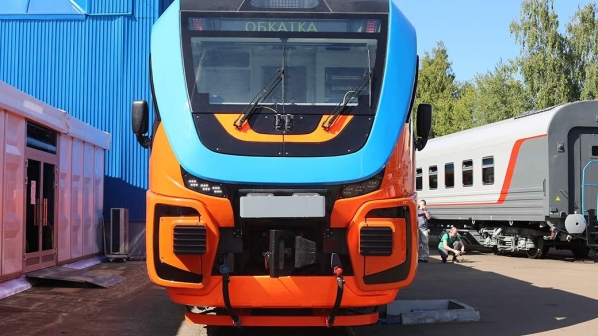The company relaunched the production of DMUs with the development of the RA-3 in the first half of the year, and had supplied 56 vehicles by the end of the year.
Locomotive sales grew across the board, with the number of diesel locomotives sold increasing from 216 to 281 units, shunting locomotives from 146 to 245 units, electric freight locomotives from 478 to 514 units, and industrial electric locomotives growing from 4 to 15 units. The sale of double-deck passenger coaches increased from 65 to 154 units.
SWEDEN: National operator SJ reported an 11% growth in passenger numbers for 2019, with 34.3 million journey made, up 2.5 million on 2018.
Net sales amounted to SKr 8.6bn ($US 879.3m), up from SKr 7.8bn in 2018, while operating profit amounted to SKr 772m, up from SKr 468m. Profit was SKr 619m, up from SKr 389m in 2018.
The customer satisfaction index improved from 69 to 73, with the overall punctuality for SJ's long-and medium-distance trains reaching 90%, up from 86%.
DENMARK: Danish State Railways (DSB) has reported a pre-tax loss of DKr 1.6bn ($US 231.7m) in 2019, which the company says was due to a write-down on its long-distance and regional fleets.
Fleets for long-distance and regional services were written down by DKr 1.5bn, with 11 IC4 sets taken out of operation and written down by DKr 151m. After adjusting for this, DSB posted a pre-tax profit of DKr 84m.
Passenger revenue decreased 2%, which DSB says was primarily due to the lower price of fares on the Great Belt, a move that was designed to strengthen the competitiveness of rail.
ESTONIA: Rail carried 13.2 million tonnes of freight in 2019, a 2.4% decrease compared with 2018. Traffic mainly comprised fertiliser, mineral fuels, chemical products and oil shale.
Freight transiting through the country accounted for 9.4 million tonnes, a 3% increase compared with 2018.
Intermodal traffic has steadily increased, amounting to nearly 76,800 twenty-foot equivalent units (TEU) in 2019, an increase of more than 46% compared with 2018.
About 8.3 million passengers travelled on local services in 2019, an 8% increase on 2018.
NORWAY: Passenger, freight and bus operator Vy has reported a pre-tax profit of NKr 699m ($US 74.6m), up 19% from NKr 585m in 2018.
Vy carried 73.2 million passengers in Norway in 2019, a 2.8% increase on 2018, and carried a total of 78.7 million passengers across Norway and Sweden. Punctuality in Norway was 86.3%, a slight improvement on 2018 but still short of the target of 90%.
Vy’s rail freight operator CargoNet returned a profit of NKr 26m in 2019, up from an NKr 61m loss in 2018, the first profit for the new subsidiary.
Freight punctuality improved from 93% to 95%, ahead of the target of 92%.
POLAND: The 17.1 million tonnes of freight carried on Poland’s network in December 2019 was the lowest since February 2017, a 10.8% decrease year-on-year, in a trend that has begun to worry freight operators.
PKP Cargo says the rail freight market in Poland has been continuously shrinking year-on-year since December 2018.
In December 2019, traffic was decreasing at the fastest rate since the beginning of 2019 with 3.9 billion tonne-km undertaken, a 14% decrease.
“We have had a difficult year in the rail freight industry in Poland, but experts and analysts believe this year should be better,” says PKP Cargo president, Mr Czesław Warsewicz. “This is because the macroeconomic environment will improve, which will favour rail freight. I am thinking here in particular of the increase in implemented infrastructure investments.”
TURKEY: Exports carried by rail reached $US 967m in 2019, a 33% rise year-on-year. Overall exports increased by 2.2% in 2019 compared with 2018, reaching nearly $US 180.72bn. Nearly 62% of this was carried by sea, followed by 28.4% on road, 8.4% by air and 0.6% by rail.
Imports fell by 9% to $US 202.7bn in 2019, with 54.2% carried by sea, 16.4% by road, 14.2% by air and 0.7% by rail. Imports by sea decreased by 17% to $US 109.8bn, and road fell by 6% to $US 33.2bn. Imports by air rose by 1.2% to more than $US 28.8bn, while imports by rail rose 15.8% to more than $US 1.4bn.

